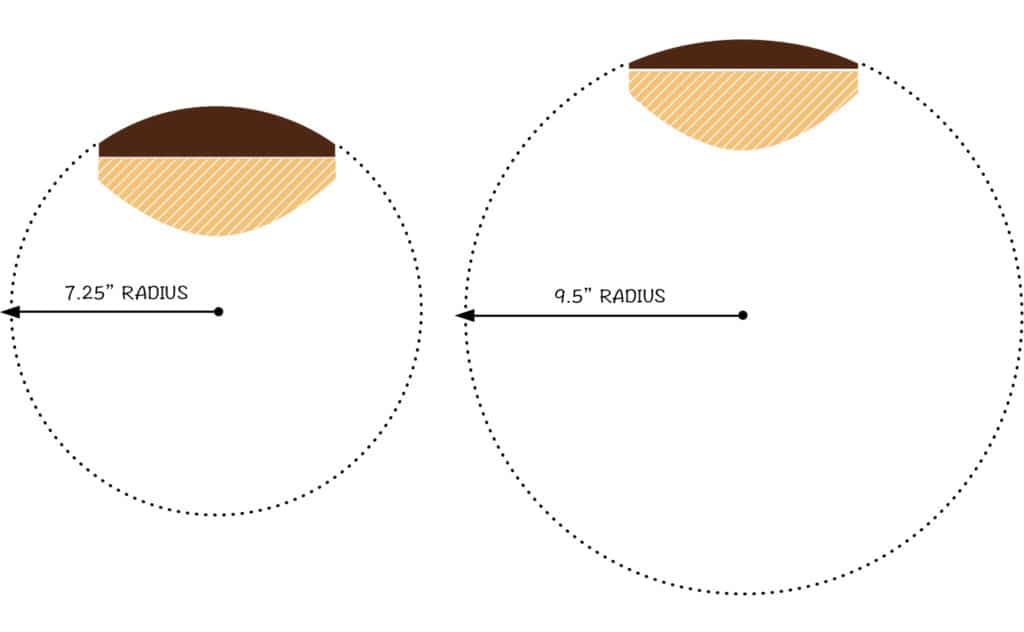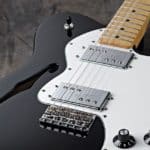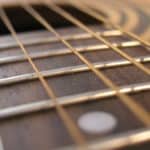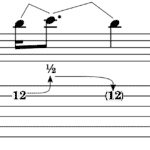Fretboard radius has always been a confusing concept for me.
It wasn’t until very recently that I finally got to understand clearly how it’s measured.
It’s, for many of us, one of those things you just get for granted when picking a new guitar.
However, there’s an argument to be had about the importance of this measure for different players.
Let me just answer the main question of this article to just kick off things: What is fretboard radius and why is it important?
Fretboard radius is the measurement that describes the curvature of the fingerboard across the neck and it has serious implications for playability. Flatter radiuses are the ones measured with a higher number of inches, allow for a lower string action, while rounder radiuses require higher strings.
For those who want to dig a bit deeper into the topic, in this article I will try to answer the most common questions about fretboard radius.
After that, I will talk briefly about the most common configurations modern guitars use.
Finally, I will give you my conclusions and recommendations about what I think would be the better approach when dealing with such technicals things, if that’s important to you.
Are you ready to get started?
Let’s go!
What is fretboard radius?
Fingerboard radius is the arc the playing surface has across its width. If you look closely, from the bridge or nut, you will see that frets are not perfectly flat: They are curved downwards. The radius measurement for a guitar explains how curved the fretboard is, which has deep implications for playability.
How is fretboard radius measured?
To understand how the fingerboard radius is measured, imagine a big circle. A circle as big as the number of inches the measured radius indicates. Now, if you overlap the view from the bridge to the nut of the neck, you will see that the curvature of the frets matches perfectly a part of that circle.
A diagram will make understanding this concept easier:

How does fretboard radius impact tone?
Fingerboard radius doesn’t have a noticeable impact on tone. The perceived tonal difference, if any, will probably be from the player getting used to a different neck plain curvature or if that’s the case, a completely different neck on the guitar that altered the previous tonal equation.
How does fretboard radius impact playability?
Radius has a big impact on the playability of a guitar. A flatter fingerboard allows for a lower string action, which has pros such as less effort to fret notes and easier bends, but cons as worse intonation for heavy-handed players. A rounder fretboard requires higher action which has the opposite effects.
This is a matter of preference, however, and many players will enjoy more, for instance, the easier experience of playing barre chords a rounder radius facilitates over the lower action benefits of a flatter surface.
The best you can do is try out different guitars until you find one that matches your playstyle.
Most common fingerboard radiuses and the brands they use them
Just as an informative resource, and perhaps for you to look up your guitar, I created this table with some of the most common radius measurements and some popular brands that use them, or have used them.
| Radius | Brands | Models |
| 7.25” | Fender | Vintage |
| 9.5” | Fender, Guild | Modern |
| 10” | PRS | Custom 24 |
| 12” | D’Angelico, Dean, Epiphone, Gretsch, Ibanez, Jasmine, Schecter, Taylor, Washburn | Most |
| 14” | Carvin, Danelectro | Most |
| 16” | Godin, Jackson, Larrivee, Martin, Seagull, Takamine, Yamaha | Most |
| 20” | Strandberg | Most |
| Compound radiuses | EVH, Collings, Gibson | Most, Les Paul Standard 2013 |
Which fingerboard radius is easier to play?
Flatter guitar radiuses (the more inches, the flatter) are easier to play with since they allow for a lower string action to be set up. This facilitates depressing the strings, and helps with bending, making the work of the fretting hand more forgiving. Barre chords are easier on rounder radiuses, although.
What fingerboard radius is best?
There is no fretboard radius better than others. It will depend on your own preferences. Flatter and rounder fingerboards both have their pros and cons. If you play fast and bend a lot, probably a flatter radius would suit you better, and if you play a lot of chords, perhaps a rounder one will be better.
Nothing is set in stone, however, and I encourage you, again, to try out as many instruments as you can until you find a good match for your style.
Straight vs compound necks
The main difference between straight and compound necks is that a straight neck will have its radius remain the same all the way, but a compound neck will start rounder near the nut and get flatter closer to the neck joint. This allows for easier chords at the first frets and effortless bends up the neck.
Conclusions and recommendations
Whether you are looking for a new guitar or planning on building or having one built, getting to know, at least at a high level how fretboard radiuses work is, in my opinion, something that will help you make a better informed final decision.
However, here in GearAficionado, I always say that you should try out every instrument before buying it if you have the chance.
I don’t think anyone can really understand the feel of all these different radiuses without getting to play them live. At least the ones that you think might work out better for you.
If it’s within your reach, try to get to play completely different guitars to clearly understand where the variation lies, and then start checking out ones closer to the one you preferred the most.
Finally, don’t forget to have fun. Technicalities for some people get the joy out of getting a new piece of gear. You don’t have to know it all about something that makes you smile. Just go and play the instrument that feels best to you.

Hello there, my name is Ramiro and I’ve been playing guitar for almost 20 years. I’m obsessed with everything gear-related and I thought it might be worth sharing it. From guitars, pedals, amps, and synths to studio gear and production tips, I hope you find what I post here useful, and I’ll try my best to keep it entertaining also.





